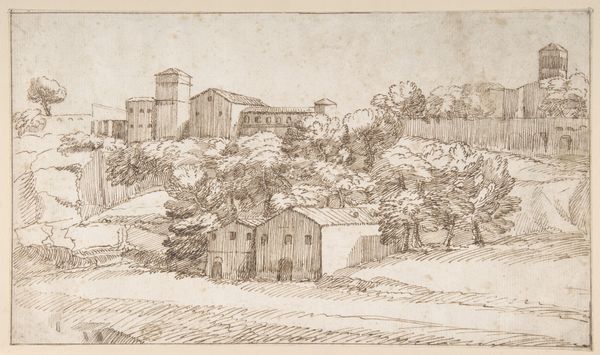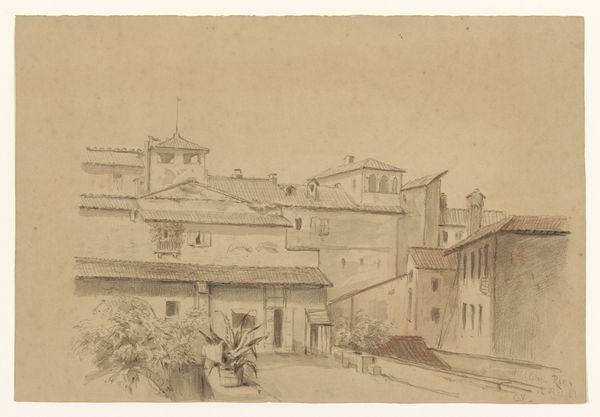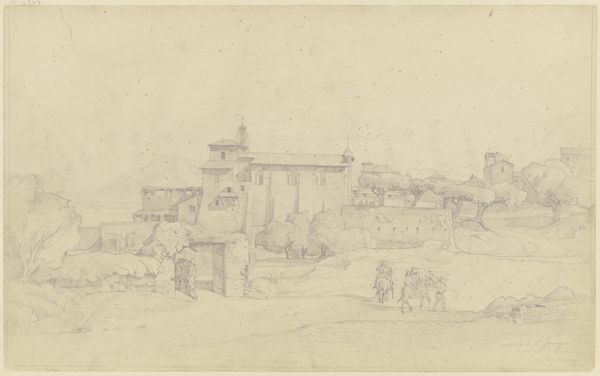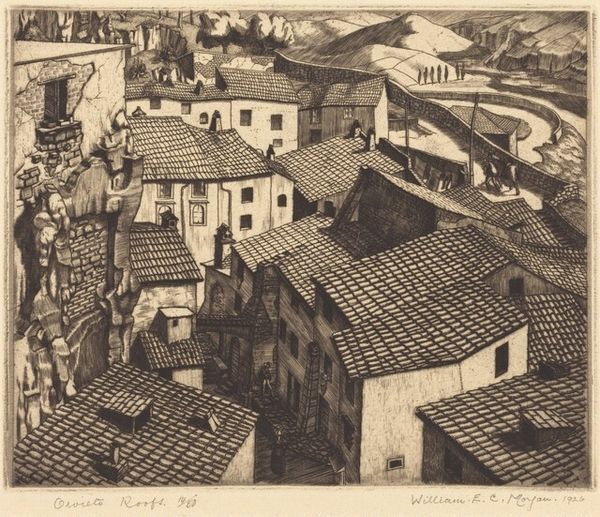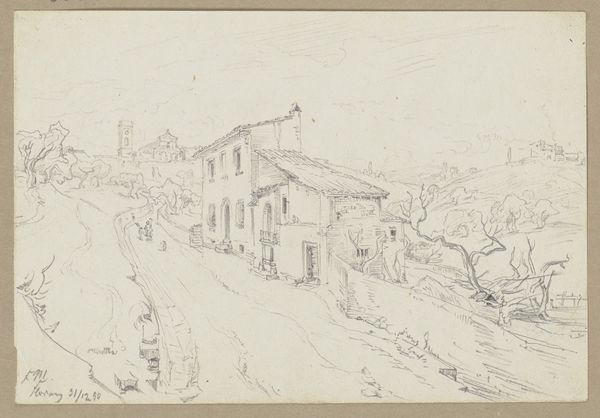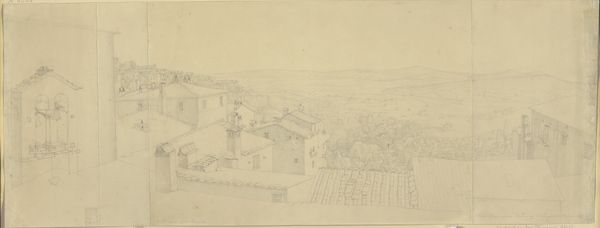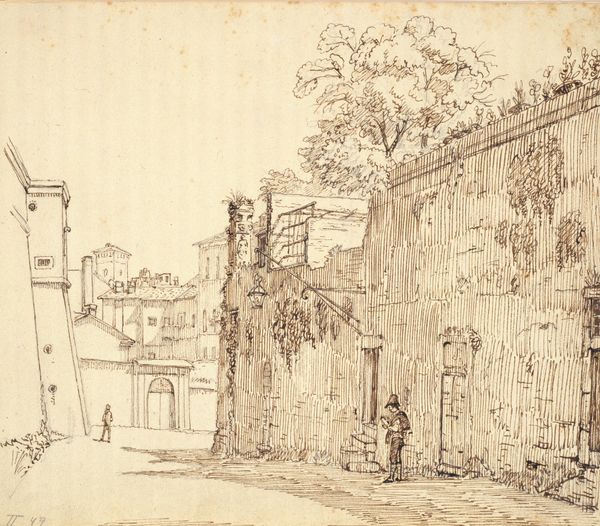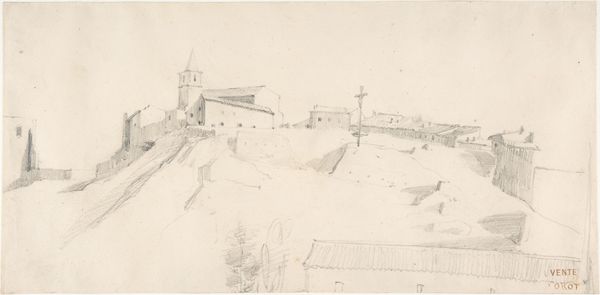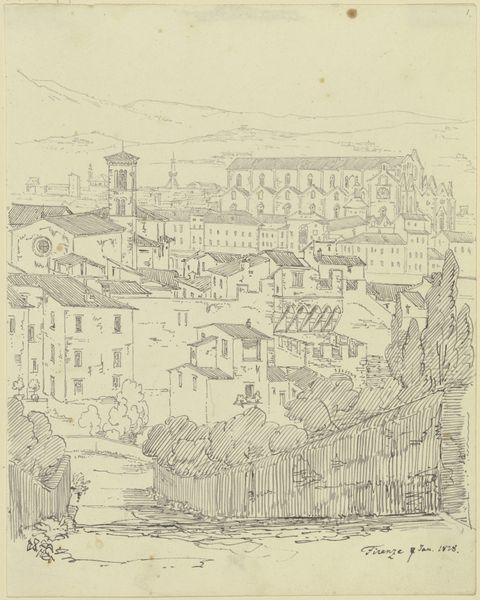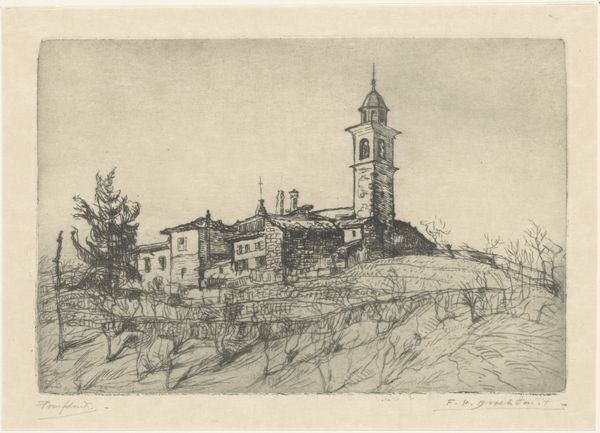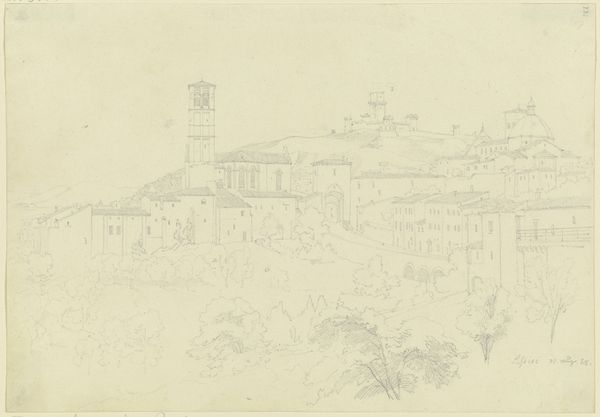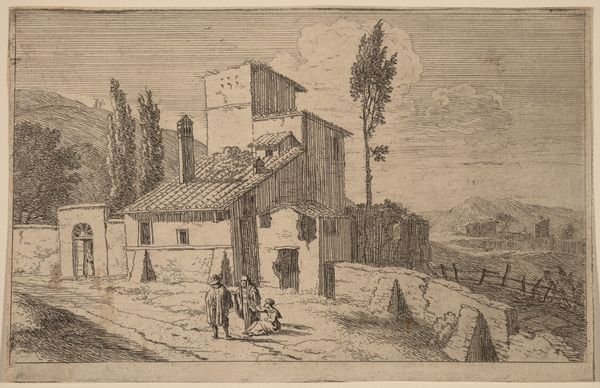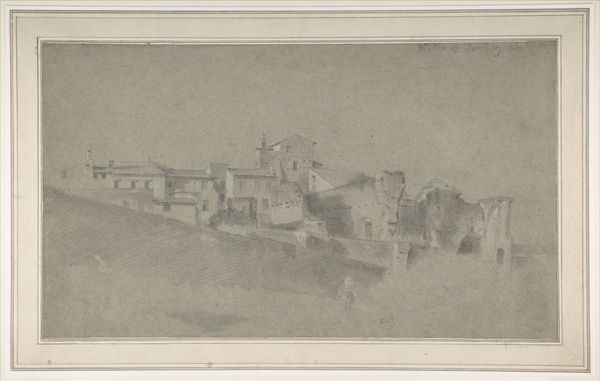
View over Roofs towards the Column of Arcadios in Constantinople 1555 - 1559
0:00
0:00
drawing, ink, pen
#
drawing
#
pen sketch
#
11_renaissance
#
ink
#
pen
#
cityscape
Dimensions: 208 mm (height) x 326 mm (width) (bladmaal)
Curator: Melchior Lorck, a fascinating figure of the Renaissance, created this drawing titled "View over Roofs towards the Column of Arcadios in Constantinople" sometime between 1555 and 1559. It’s a pen and ink drawing currently held at the SMK, the National Gallery of Denmark. Editor: My immediate impression is of intricate texture and muted tones, which creates a beautiful effect of quiet observation, like peeking over the edge of something. The lines are so precise, even in a seemingly casual cityscape. Curator: Precisely! Lorck was a keen observer. This wasn't just any cityscape; it documented a very specific political and cultural milieu. As an envoy of the Danish King, his detailed records of Ottoman society are incredibly valuable from a socio-political perspective. Editor: That detail transforms the view from mere representation to coded knowledge. Looking at it through that lens, I can almost feel the sense of being on the outside, looking in—of trying to understand the culture from an elevated distance. The tiled roofs could symbolize layers of identity. Curator: I agree. Lorck’s involvement in diplomatic missions for the Habsburgs, frequently engaging with imagery designed for imperial messaging, is significant here. These weren’t just observations; he was composing a visual narrative potentially intended for European audiences, defining the image of Constantinople. Editor: The Column of Arcadius in the distance almost acts as a visual anchor, signifying the ancient and fading Roman presence. Considering his role, its placement feels symbolic – a conversation between empires. The rooftops filling the view leading toward that column create a kind of visual path... an invasion of perspective? Curator: Indeed. Think about the dissemination of these images, too. This cityscape likely played a role in constructing the Western image of the Ottoman world at the time, influencing both intellectual and popular understandings of the East. We also have to acknowledge his patrons who directed the type of work and its reception. Editor: What strikes me now is how powerful seemingly "neutral" architectural drawings can be, acting as potent conveyors of power and cultural understanding—or misunderstanding, given the inevitable biases at play. The image almost takes on a mask through the use of perspective and intention. Curator: Ultimately, Lorck’s work offers an invaluable insight into both the artist’s skills, but also into the complex world of cross-cultural exchange and political machinations during the Renaissance period. It demonstrates the deep and intrinsic link between politics, culture and the arts. Editor: Yes, and seeing through the eyes of the artist, understanding his cultural baggage makes you realize that even landscapes carry stories shaped by purpose and point of view. Fascinating!
Comments
No comments
Be the first to comment and join the conversation on the ultimate creative platform.
